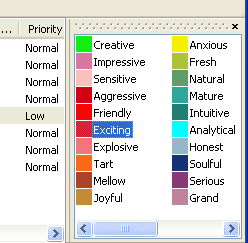Human impulses and feelings are generally influenced not only by situations experienced at all times, but also by many other factors that affect emotional states, including colors and the chromatic environment.
Colors have a lot of influence on people’s moods, especially children. The psychological effects of colors on moods began to be studied as early as the 18th century and, over the years, different disciplines have studied their influence. The effects that chromatic objects can have on personal emotions can be divided into two categories: direct influences and indirect influences.
- Although one of the most important factors influencing emotions is light.
- Colors are associated with different moods.
- We can separate the color palette into various classifications.
- For example in warm and cold colors.
- Warm.
- Red.
- Orange.
- Yellow and their variations are more vibrant and the opposite happens in cold colors.
- Gray tones.
- Dark blue.
- Black.
- Etc.
Red is considered an antidepressant color, the strongest in the entire color gamut, and is usually associated with concepts such as passion, love, energy, vitality, etc. Some of the sensations that this color can cause are palpitations, to increase blood pressure, as well as to increase desire and arousal. For people who tend to have negative moods and suffer from lack of motivation, depression, anxiety or loneliness, this variety of tones can be helpful in improving their mood.
If what we want is to have a calm and sedative environment, the most suitable color is green, some of the effects associated with this tone are low nerve tension, making it ideal for those who have a lot of stress. associated with nature and cause a feeling of freshness, it can also be combined with pastel or light tones to create a more stabilizing environment.
Colors are associated not only with emotional states, but are also often used in ancient relaxation and meditation techniques such as Feng Shui, these philosophies also establish that each color has a different energy, and this is what causes different moods and affects people differently. Decorative objects can also create an atmosphere of harmony.

